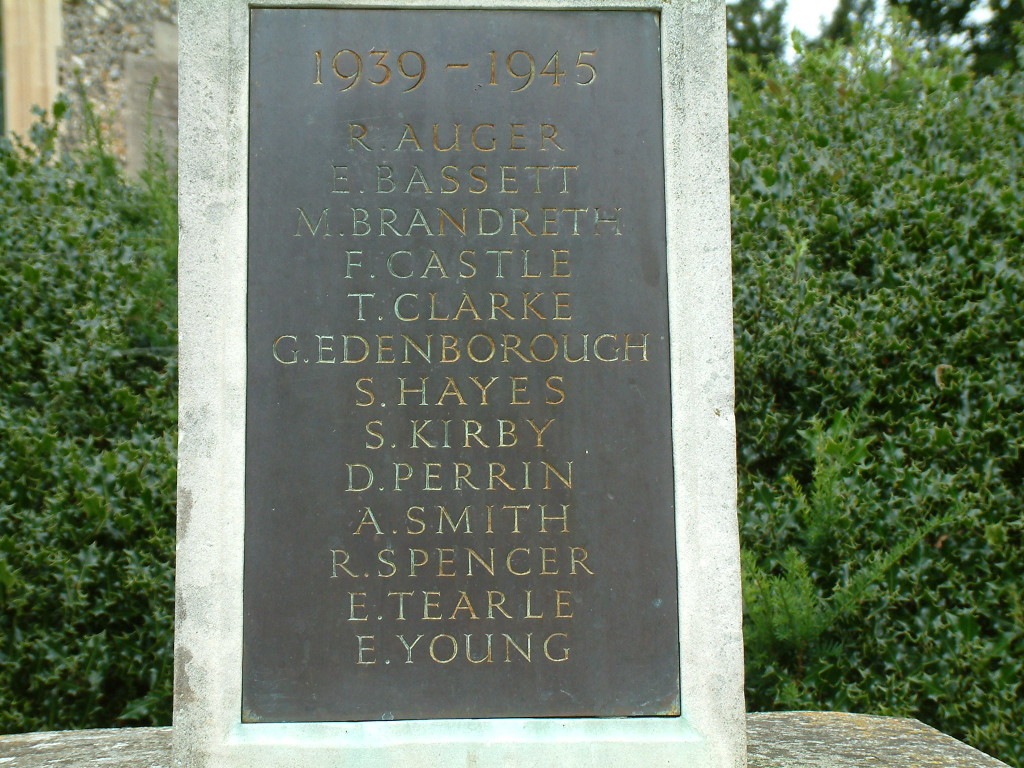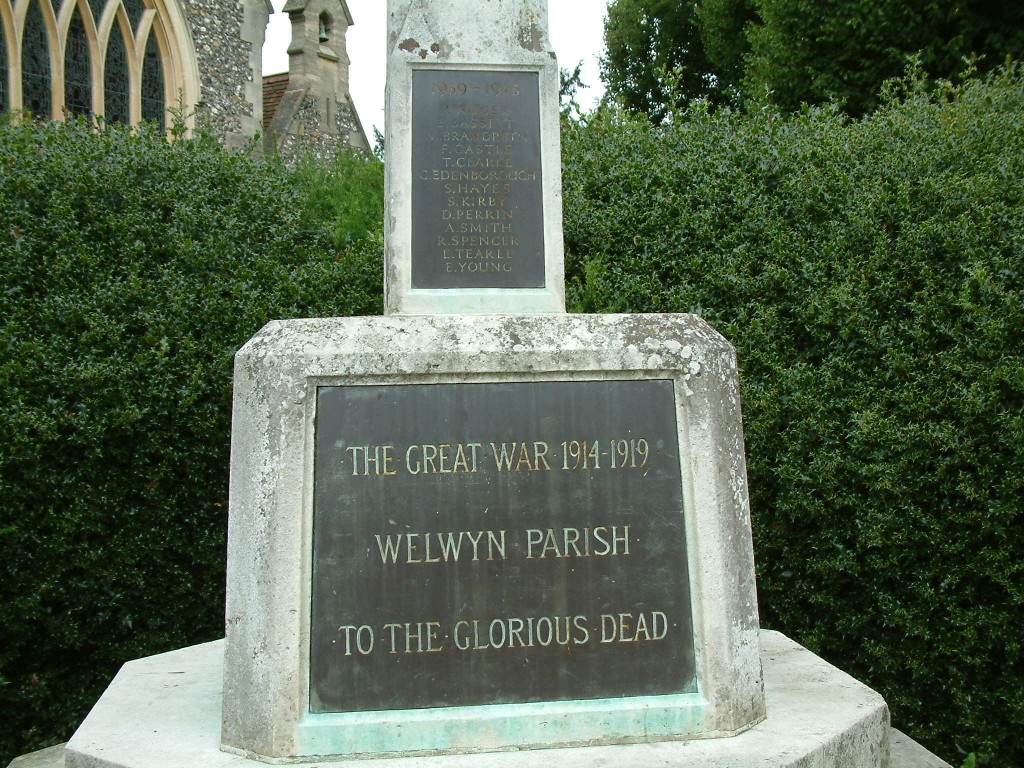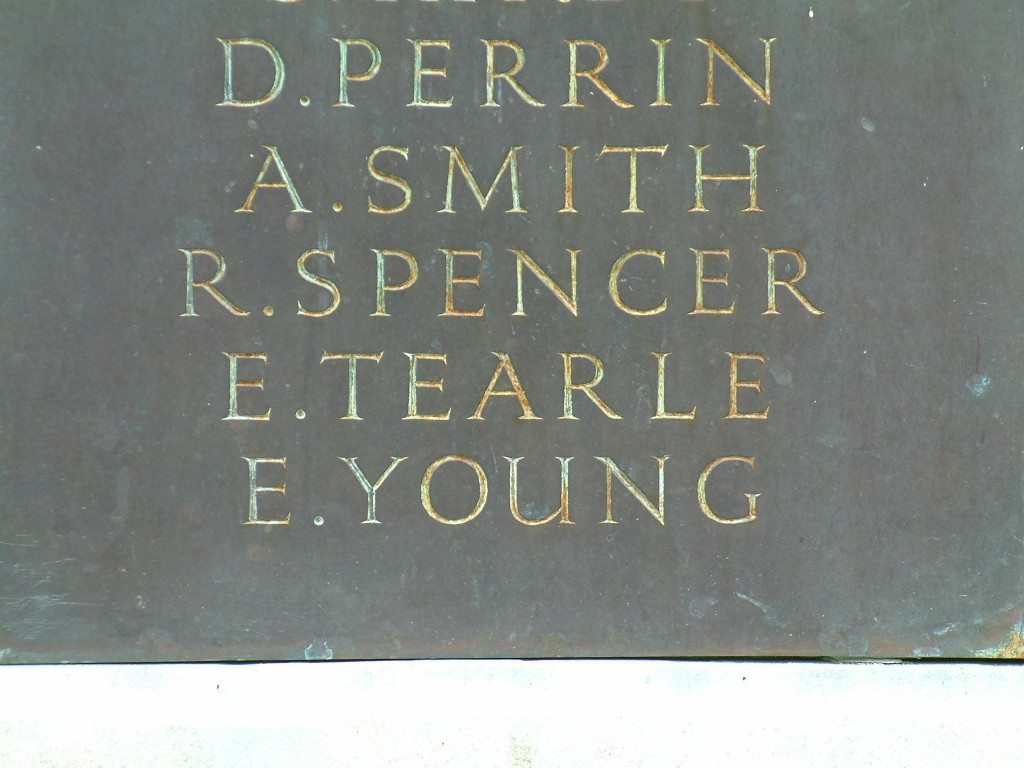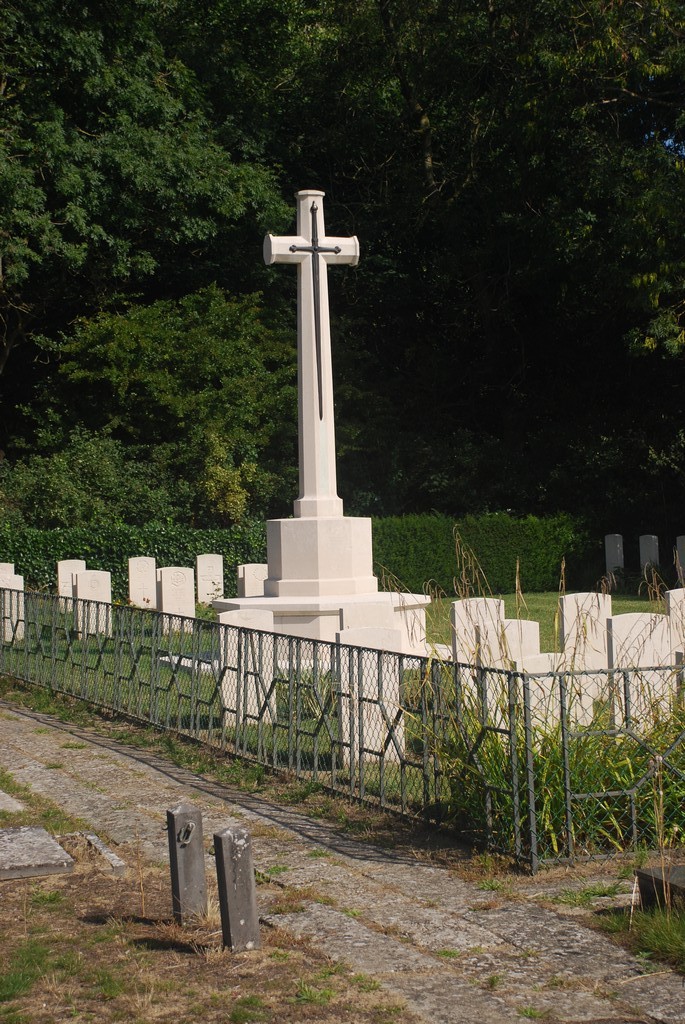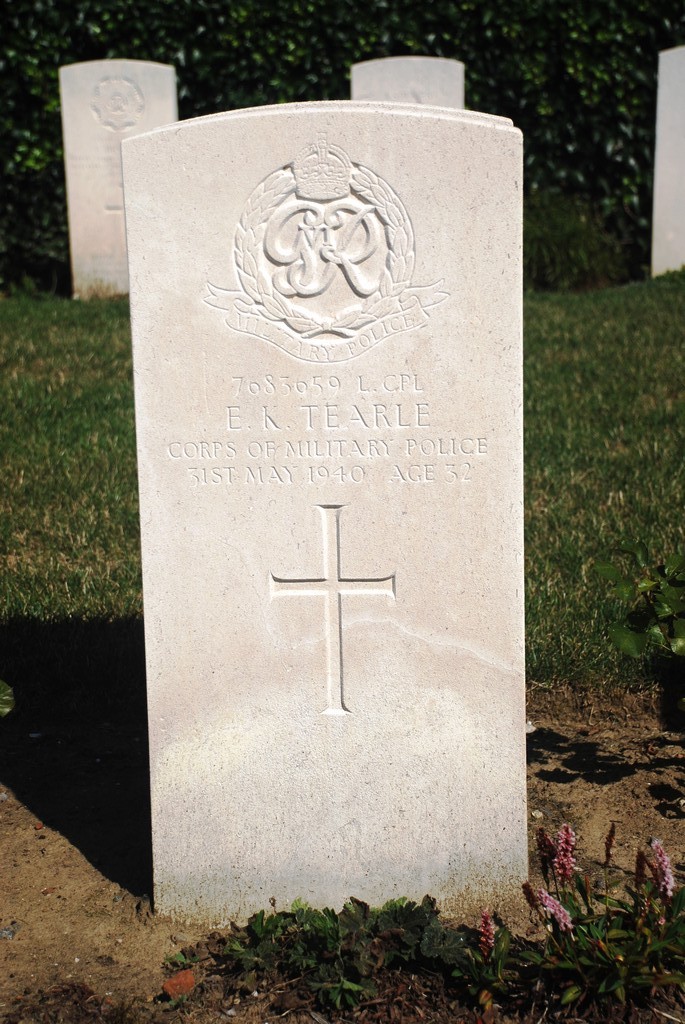Elaine and I got quite a surprise, even a shock, to see the name E TEARLE on a WW2 memorial outside St Marys Church in the pretty little village of Old Welwyn. Welwyn Garden City is close to St Albans, and you can walk to Old Welwyn from Hatfield. It took us a while to gather the information needed to tell his story, but here it is now.
The E Tearle honoured on WW2 section of the Old Welwyn memorial is Edward Kefford W Tearle, of the military police, b1907 in Essex.
The memorial itself is next to St Marys, Old Welwyn.
Here is the information supplied by the Commonwealth War Graves Commission:
Name: TEARLE, EDWARD KIFFORD Initials: E K
Nationality: United Kingdom
Rank: Lance Corporal
Regiment/Service: Corps of Military Police
Age:32
Date of Death:31/05/1940
Service No: 7683659
Casualty Type: Commonwealth War Dead
Grave/Memorial Reference: Plot 2. Row C. Grave 26.
Cemetery: DE PANNE COMMUNAL CEMETERY
This Edward Kefford W Tearle b1907 Lexden, Kent, was the son of Edward Kefford Tearle 1878 of Hatfield and Maud Sarah nee Micklefield, and as far as I know, he was their only son. He was the grandson of William 1857 of Soulbury and Sarah nee Kefford. He was the great-grandson of John 1831 Soulbury and Harriet nee Figg.
Both these families are descended from Richard 1805 and Martha nee Walker, the parents of all the Soulbury Tearles. Leslie James T, John Henry T and Edward Kefford W Tearle are all descended from John Tearle 1830 and Harriet nee Figg, while Norman is descended from Richard 1843 (John’s brother) and Elizabeth nee Ellingham. All the Soulbury Tearle families are on the branch of John 1741.
The CWGC said of Edward’s last hours: “The British Expeditionary Force was involved in the later stages of the defence of Belgium following the German invasion in May 1940, and suffered many casualties in covering the withdrawal to Dunkirk. De Panne village was the site of the final General Headquarters of the BEF in 1940, and there was a Casualty Clearing Station on the beach, which was an embarkation beach for the evacuation. From 27 May to 1 June 1940, the Germans strove to prevent the embarkation of the troops by incessant bombing, machine-gunning and shelling. The first German troops reached the village between 14.00 and 15.00 hrs on 31 May, and after heavy fighting, the commune was completely occupied by about 9.00 hrs on 1 June.”
Jonathon Tearle wrote to me on 20 Sep 2006
“This is my grandfather who was killed at Dunkirk in WW2. Although the evacuation was considered a great success, some poor souls got left behind to slow down the German advance. Edward was one of these brave men, and he wasn’t even a regular.”
Here are the results from our visit to the De Panne Communal Cemetery. We took the bus from Ypres to De Panne and a tram trip from De Panne to the cemetery below.
.
John Tearle and Harriett nee Figg were shockingly poor – they lived in cottages in Simonsyde (off the Coopers Green Lane to Stanborough) and they spent time in the Hatfield Union Workhouse. To compound their tragedies caused by poverty, John and Harriet’s grandsons were killed in WW1: Leslie James Tearle was killed in France and John Henry Tearle was killed in Gallipoli. Then, in WW2 this man, their g-grandson, was tragically killed defending the beaches of Dunkirk as the British and French armies made their escape, on the very same day that his second cousin, Norman Tearle, was killed trying to ferry men from the beaches to the waiting warships. Norman went to war from Soulbury, while Edward’s family had left the village two generations earlier.
We went to see Norman’s grave in Oostende, by tram, later on the same day that we visited De Panne.
Edward Kefford W Tearle, above, died in May 1940, but his father, Edward Kefford Tearle (John Henry’s brother) died in September the same year. So poor Maud Sarah Tearle nee Micklefield lost both her son and her husband within six months.
